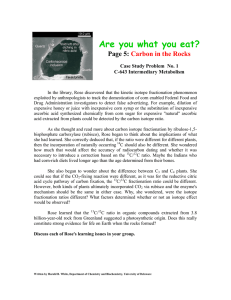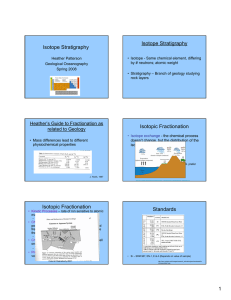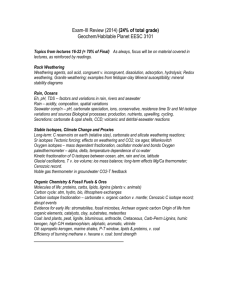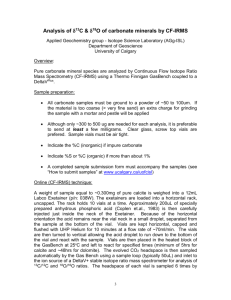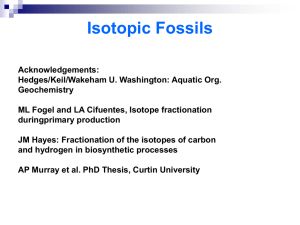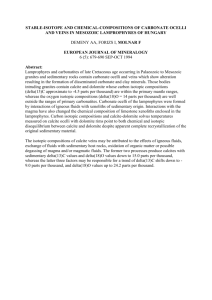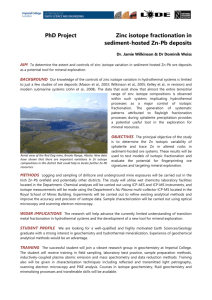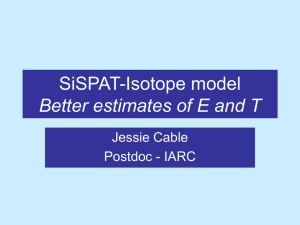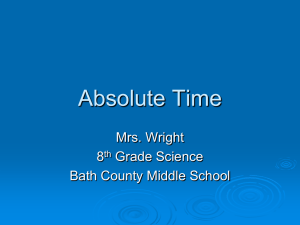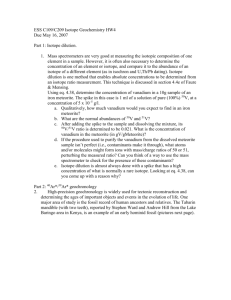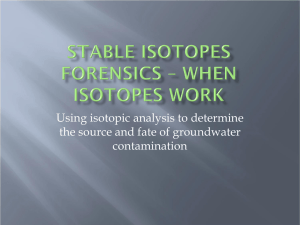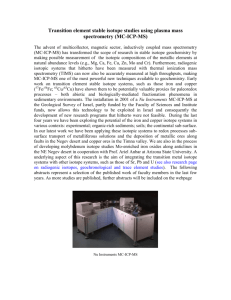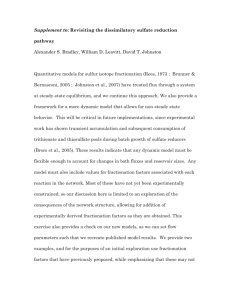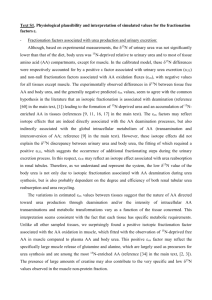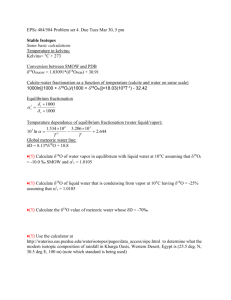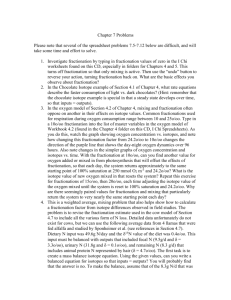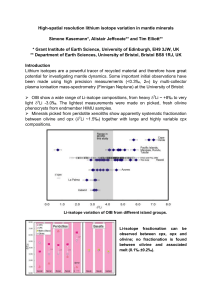A biogeochemical perspective on stable isotope
advertisement
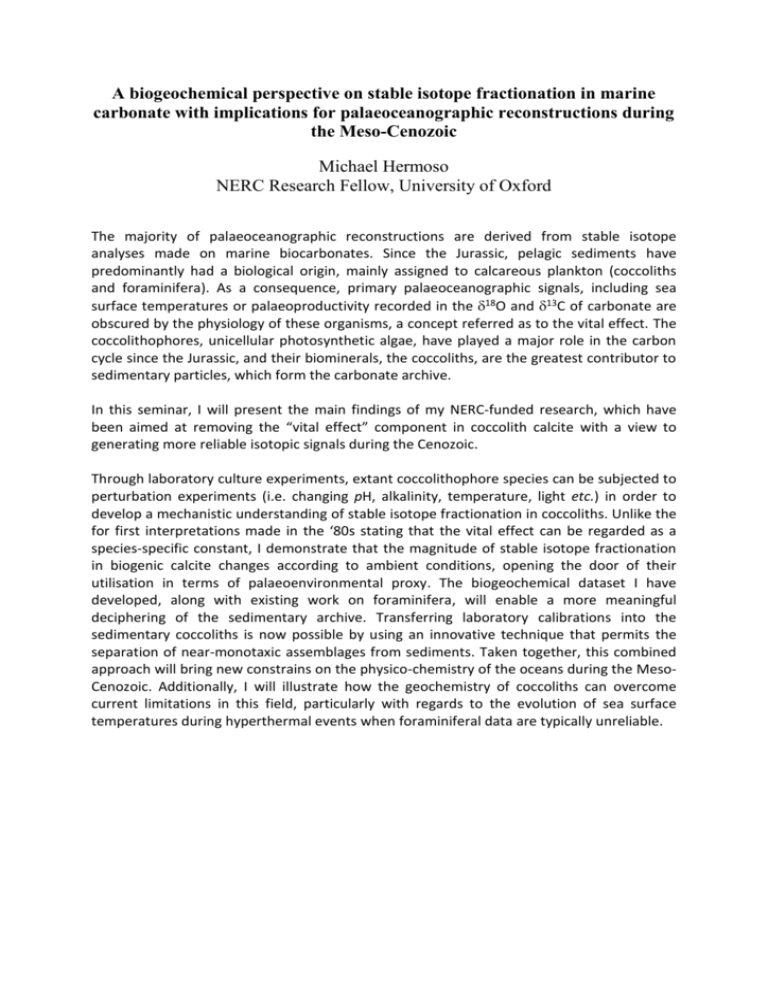
A biogeochemical perspective on stable isotope fractionation in marine carbonate with implications for palaeoceanographic reconstructions during the Meso-Cenozoic Michael Hermoso NERC Research Fellow, University of Oxford The majority of palaeoceanographic reconstructions are derived from stable isotope analyses made on marine biocarbonates. Since the Jurassic, pelagic sediments have predominantly had a biological origin, mainly assigned to calcareous plankton (coccoliths and foraminifera). As a consequence, primary palaeoceanographic signals, including sea surface temperatures or palaeoproductivity recorded in the 18O and 13C of carbonate are obscured by the physiology of these organisms, a concept referred as to the vital effect. The coccolithophores, unicellular photosynthetic algae, have played a major role in the carbon cycle since the Jurassic, and their biominerals, the coccoliths, are the greatest contributor to sedimentary particles, which form the carbonate archive. In this seminar, I will present the main findings of my NERC-funded research, which have been aimed at removing the “vital effect” component in coccolith calcite with a view to generating more reliable isotopic signals during the Cenozoic. Through laboratory culture experiments, extant coccolithophore species can be subjected to perturbation experiments (i.e. changing pH, alkalinity, temperature, light etc.) in order to develop a mechanistic understanding of stable isotope fractionation in coccoliths. Unlike the for first interpretations made in the ‘80s stating that the vital effect can be regarded as a species-specific constant, I demonstrate that the magnitude of stable isotope fractionation in biogenic calcite changes according to ambient conditions, opening the door of their utilisation in terms of palaeoenvironmental proxy. The biogeochemical dataset I have developed, along with existing work on foraminifera, will enable a more meaningful deciphering of the sedimentary archive. Transferring laboratory calibrations into the sedimentary coccoliths is now possible by using an innovative technique that permits the separation of near-monotaxic assemblages from sediments. Taken together, this combined approach will bring new constrains on the physico-chemistry of the oceans during the MesoCenozoic. Additionally, I will illustrate how the geochemistry of coccoliths can overcome current limitations in this field, particularly with regards to the evolution of sea surface temperatures during hyperthermal events when foraminiferal data are typically unreliable.
